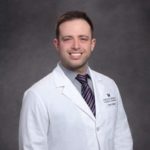What is Xanax used for? Find out the reasons why someone would take Xanax, prescribed or recreationally, and learn about the different forms of the benzodiazepine.
Many people ask “What is Xanax used for?” or “What are the uses for Xanax?” As a short-acting anti-anxiety drug, Xanax acts fast to ease the symptoms of two well-known mental disorders. The Psychopharmacology Bulletin states that an extended-release form of alprazolam, Xanax XR, can help prevent symptoms from these disorders from occurring in the first place, helping individuals who suffer from them to lead more satisfying, productive lives.
Article at a Glance:
- Xanax is a short-acting anti-anxiety drug used to treat anxiety and panic disorders.
- Xanax affects the central nervous system and calms the brain and nerves by increasing GABA neurotransmitter levels.
- Xanax comes in a regular form and an extended-release form.
- Xanax can be very effective in helping people cope with symptoms but can also lead to abuse.
- The Recovery Village offers an intensive detox program for people addicted to Xanax.
What Is Xanax Used For? (Why Is Xanax Prescribed?)
“What is Xanax used to treat?” is a commonly asked question regarding this drug. There are two primary conditions for which this medication is prescribed. The uses of Xanax include anxiety disorders, which can affect both adult sand children. The second is panic disorders, which are associated with anxiety. When taken as prescribed, Xanax (alprazolam) use can help stop episodes of intense, irrational fear or anxiety when they start to occur.
Both the extended-release and the regular form of Xanax take effect quickly on the central nervous system, calming the brain and nerves by increasing levels of the neurotransmitter GABA (gamma-aminobutyric acid) in the brain. Xanax is a central nervous system depressant, which means that it also slows down vital functions like breathing and heartbeat. Xanax use without a doctor’s prescription, or taking the medication inappropriately, can result in over-sedation, overdose, and death. Like other drugs in the category of benzodiazepines, Xanax can also cause dependence and addiction when used for nonmedical reasons.
Anxiety disorders
According to a report from IMS Health, alprazolam consistently ranks as one of the most frequently dispensed psychotropic drugs in the United States. In 2012, over 49 million prescriptions were written for Xanax, making it the 13th most widely prescribed medication in the country and the most widely prescribed psychiatric medication. However, the growing popularity of alprazolam has also made the medication more readily available for recreational or casual users.
The most common use for Xanax is the management of anxiety disorders. Anxiety affects over 18 percent of American adults, according to the National Institute of Mental Health, and approximately 22 percent of these individuals suffer from severe anxiety symptoms, such as the following:
- Persistent feelings of fear that are not based on reality
- Frequent periods of restlessness or nervousness
- Difficulty concentrating
- Sleep disturbances
- Heart palpitations
- Shortness of breath
- Sensations of tightness in the throat or chest
- Sweating
Anxiety can be a disabling condition, interfering with jobs, school, relationships, or social activities. When prescribed for anxiety, Xanax is usually recommended for short-term use to prevent abuse or addiction.
Panic disorder
After successful clinical trials, the U.S. Food and Drug Administration (FDA) approved the use of Xanax for the treatment of panic disorder. People with panic disorder can experience crippling attacks of anxiety, especially in public places. In fact, the fear of having a panic attack in front of other people often triggers further panic attacks and can lead to social isolation and depression. Panic attack symptoms like the following can be so terrifying that the individual may fear that he or she is about to die:
- An overwhelming sense of dread or doom
- Pain or pressure in the chest
- A feeling of choking or suffocating
- Irregular or rapid heartbeat
- Heavy sweating
- Nausea and vomiting
- Tremors and shaking
- Dizziness and light-headedness
- A sense of being detached from reality
The Anxiety and Depression Association of America estimates that 6 million Americans suffer from panic disorder. Xanax has been proven effective at relieving panic symptoms when they begin to occur, allowing millions of individuals to successfully handle situations that might otherwise trigger severe anxiety.
When medical use becomes abuse
When Xanax is combined with psychotherapy and other therapeutic modalities, the medication can be highly effective at helping people cope with their symptoms. Unfortunately, some users come to rely on alprazolam as a form of pharmacological support. Other users experiment with the drug on a recreational basis, often combining it with drugs like alcohol or other tranquilizers that can intensify its sedative effects and increase the risk of overdose and addiction.
Once an individual becomes physically or psychologically addicted to Xanax, the safest way to stop using the drug is to enter a medically managed detox program. In medical detox, the dose of Xanax is gradually tapered off under a doctor’s supervision, with 24-hour clinical monitoring to prevent seizures, tremors, rebound anxiety, and other withdrawal symptoms.
The Recovery Village offers an intensive, progressive detox program for individuals who are struggling with addiction to Xanax and other prescription medications. Contact the admissions coordinators today to learn more about their advanced approach to substance abuse recovery.


The Recovery Village aims to improve the quality of life for people struggling with substance use or mental health disorder with fact-based content about the nature of behavioral health conditions, treatment options and their related outcomes. We publish material that is researched, cited, edited and reviewed by licensed medical professionals. The information we provide is not intended to be a substitute for professional medical advice, diagnosis or treatment. It should not be used in place of the advice of your physician or other qualified healthcare providers.